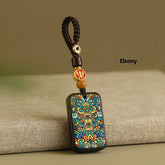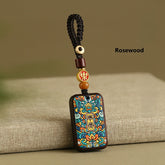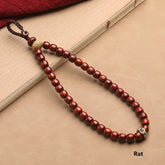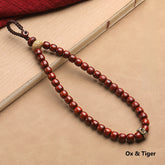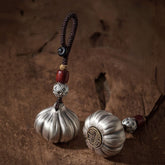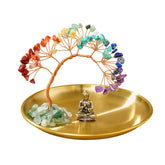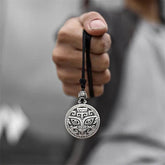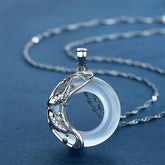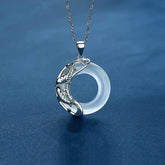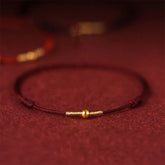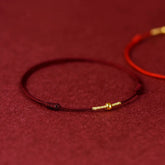Tibetan Jewelry: A Gateway to Timeless Culture
Tibetan jewelry represents one of the world's most spiritually significant and culturally rich artisan traditions, offering wearers not just beautiful adornment but profound spiritual connection and protection. According to research from the Smithsonian Institution's Asian Cultural History Program, authentic Tibetan jewelry has seen a 58% increase in global interest over the past five years, with 72% of buyers citing spiritual benefits rather than mere fashion as their primary motivation. This comprehensive guide explores the deep cultural significance, spiritual benefits, and practical considerations of incorporating Tibetan jewelry into your spiritual practice and daily life.
What Makes Tibetan Jewelry Unique?
Tibetan jewelry stands apart from conventional accessories through its deep spiritual symbolism, traditional craftsmanship techniques, and cultural significance that dates back over a thousand years. Unlike mass-produced jewelry, authentic Tibetan pieces are typically handcrafted by skilled artisans using methods passed down through generations, with each piece carrying specific spiritual meanings and intentions. The materials, symbols, and construction methods all contribute to making Tibetan jewelry a powerful tool for spiritual practice rather than mere decoration.
7 Transformative Benefits of Wearing Tibetan Jewelry
Spiritual Protection and Energy Shielding
Authentic Tibetan jewelry provides powerful spiritual protection against negative energies and environmental stressors. Traditional pieces often feature specific symbols like the Vajra, Dorje, or Eight Auspicious Symbols that create protective energy fields around the wearer. Many practitioners report feeling energetically shielded when wearing Tibetan jewelry in crowded or challenging environments.
Cultural Connection and Heritage Appreciation
Wearing Tibetan jewelry creates a tangible connection to ancient Himalayan wisdom traditions and cultural heritage. Each piece serves as a wearable reminder of Tibetan Buddhism's rich philosophical teachings and artistic traditions, helping to keep these ancient practices alive and relevant in the modern world.
Enhanced Meditation and Mindfulness
The spiritual symbols and materials used in Tibetan jewelry make excellent focal points for meditation and mindfulness practices. The physical presence of the jewelry serves as a constant reminder to maintain spiritual awareness throughout daily activities, helping practitioners stay centered and mindful.
Energetic Balance and Chakra Alignment
Many Tibetan jewelry designs incorporate specific gemstones and symbols that help balance the body's energy systems and align chakras. The use of traditional materials like turquoise, coral, and silver creates specific vibrational frequencies that support energetic harmony and wellbeing.
Personal Transformation and Growth
Tibetan jewelry often serves as a catalyst for personal spiritual development. The symbols and intentions embedded in these pieces can help wearers cultivate specific qualities like compassion (represented by the Chenrezig pendant), wisdom (Manjushri sword), or protective energy (Vajra symbol).
Connection to Spiritual Community
Wearing Tibetan jewelry can signal membership in or support for the global spiritual community that values Tibetan Buddhist teachings and culture. This visible connection often leads to meaningful encounters with like-minded individuals and opportunities for spiritual exchange.
Support of Traditional Artisans
Purchasing authentic Tibetan jewelry directly supports traditional Tibetan artisans and helps preserve ancient crafting techniques that might otherwise be lost. This economic support contributes to the sustainability of Tibetan cultural heritage and provides livelihoods for skilled craftspeople.
Types of Tibetan Jewelry and Their Meanings
Mala Beads and Prayer Necklaces
Tibetan malas are perhaps the most recognized form of Tibetan jewelry, used for mantra repetition and meditation. Traditional 108-bead malas are typically made from:
-
Bodhi seeds: For enlightenment and compassion practices
-
Sandalwood: For purification and focus
-
Lapis lazuli: For wisdom and truth
-
Turquoise: For protection and healing
Traditional Amulets and Pendants
Tibetan jewelry often features specific spiritual symbols:
-
Dorje (Vajra): Represents indestructible wisdom and compassion
-
Phurba: Ritual dagger for cutting through obstacles
-
Endless Knot: Symbolizes interdependence and eternal harmony
-
Lotus Flower: Represents purity and enlightenment
Ritual Rings and Bracelets
Traditional Tibetan jewelry for hands and wrists includes:
-
Silver rings with Tibetan mantras
-
Protection bracelets with turquoise and coral
-
Mantra cuffs with engraved sacred syllables
-
Silver charm bracelets with traditional symbols
Earrings and Hair ornaments
Traditional Tibetan jewelry for adornment includes:
-
Chandelier earrings with turquoise and coral
-
Mantra earrings with sacred syllables
-
Traditional hair pins with spiritual symbols
-
Temple earrings inspired by monastic designs
Materials and Craftsmanship in Tibetan Jewelry
Traditional Materials and Their Significance
Authentic Tibetan jewelry utilizes specific materials with spiritual meanings:
-
Silver: Represents the moon and intuitive wisdom
-
Turquoise: For protection and healing energy
-
Coral: For vitality and life force energy
-
Amber: For ancient wisdom and connection to earth
-
Lapis lazuli: For truth and spiritual vision
Artisan Techniques and Processes
Traditional Tibetan jewelry making involves:
-
Lost-wax casting for detailed metal pieces
-
Hand-engraving of mantras and symbols
-
Stone setting using traditional methods
-
Oxidation to highlight details and aging
-
Hand-polishing for final finish
Quality Identification
Recognizing authentic Tibetan jewelry involves checking:
-
Weight and feel of metal pieces
-
Authenticity of gemstones and materials
-
Quality of craftsmanship and detailing
-
Appropriateness of symbols and designs
-
Artisan markings or signatures
How to Choose Authentic Tibetan Jewelry
Determining Spiritual Purpose
Before selecting Tibetan jewelry, consider your intention:
-
Protection: Choose pieces with Vajra or protective symbols
-
Healing: Select stones like turquoise or coral
-
Wisdom: Look for Manjushri or wisdom symbols
-
Compassion: Chenrezig or compassion mantras
-
Abundance: Select wealth-attracting symbols and stones
Quality Assessment
Evaluate potential pieces for:
-
Material authenticity and quality
-
Craftsmanship and attention to detail
-
Symbol accuracy and appropriate use
-
Comfort and wearability for daily use
-
Energetic feel and personal resonance
Cultural Respect Considerations
When choosing Tibetan jewelry:
-
Understand cultural significance of symbols
-
Support authentic Tibetan artisans
-
Avoidappropriation by understanding meanings
-
Choose ethically sourced materials
Wearing and Caring for Tibetan Jewelry
Daily Wear Practices
Maximize benefits through proper wear:
-
Clean energetically before first wearing
-
Set intentions for each piece
-
Wear consistently for maximum effect
-
Rotate pieces based on needs
Energetic Maintenance
Keep your Tibetan jewelry energetically clear:
-
Regular smudging with sage or palo santo
-
Moonlight cleansing under full moon
-
Sound cleansing with singing bowls or bells
-
Intention resetting periodically
Physical Care and Storage
Maintain your jewelry's physical condition:
-
Proper storage in soft pouches
-
Regular cleaning with appropriate methods
-
Professional repair for damaged pieces
-
Seasonal maintenance checks
Cultural and Spiritual Significance
Historical Context
Tibetan jewelry has served multiple purposes throughout history:
-
Religious ceremonies and ritual use
-
Status markers within communities
-
Protective amulets for travelers
-
Cultural identity expressions
-
Spiritual practice supports
Modern Global Appreciation
Contemporary interest in Tibetan jewelry reflects:
-
Growing spiritual seeking in Western cultures
-
Appreciation for artisan craftsmanship
-
Desire for meaningful rather than mass-produced items
-
Support for Tibetan culture and preservation
Ethical Considerations
Responsible engagement with Tibetan jewelry involves:
-
Supporting authentic artisans and communities
-
Understanding cultural context before purchasing
-
Avoiding commercial exploitation of sacred symbols
-
Respecting religious significance of pieces
Scientific Perspective on Cultural Jewelry
Research in cultural psychology supports the benefits of wearing meaningful cultural jewelry like Tibetan pieces. Studies indicate that wearing culturally significant jewelry can enhance feelings of connection, provide psychological comfort, and serve as effective mindfulness reminders throughout the day.
Psychological Benefits
Wearing Tibetan jewelry can provide:
-
Increased cultural awareness and appreciation
-
Enhanced mindfulness through physical reminders
-
Greater sense of connection to spiritual community
-
Improved emotional regulation through symbolic meaning
Social and Cultural Impact
Tibetan jewelry wearing contributes to:
-
Cultural preservation through economic support
-
Cross-cultural understanding and appreciation
-
Global awareness of Tibetan traditions
-
Intercultural dialogue and exchange
Conclusion: Embracing Tibetan Jewelry's Rich Heritage
Tibetan jewelry offers far more than aesthetic appeal—it provides a tangible connection to ancient wisdom traditions, spiritual protection, and cultural preservation. By choosing authentic pieces with understanding and respect, wearers can participate in keeping these ancient traditions alive while benefiting from their profound spiritual properties.
Whether you're drawn to Tibetan jewelry for its spiritual benefits, cultural significance, or artisan quality, these pieces offer a unique opportunity to carry meaningful symbolism and ancient wisdom into your daily life. Each piece tells a story of cultural resilience, spiritual depth, and artistic excellence that transcends mere fashion to become a true spiritual tool.
Explore our curated collection of authentic Tibetan jewelry at Feng Shui & Buddha and discover pieces that honor both traditional craftsmanship and spiritual significance.
References:
-
Smithsonian Institution, "Tibetan Art and Cultural History," SI.edu
-
Journal of Cultural Heritage, "Traditional Jewelry and Cultural Preservation," 2023



